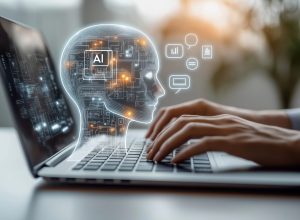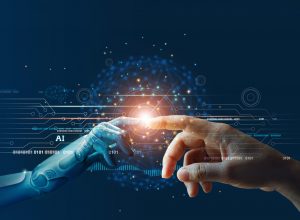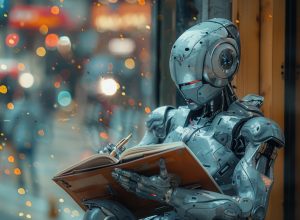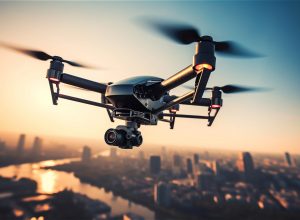Stay informed with the latest trends and updates from our blog.
In May 2025, The European Union Intellectual Property Office (EUIPO)-commissioned study was released to examine generative AI through legal, technical, and economic lenses. It also explores how copyright law applies to (1) the use of copyrighted works in AI training and (2) AI-generated content.
Main Findings:
High-quality, copyrighted materials are crucial in various training stages of GenAI models, including pretraining, domain-specific fine-tuning, and reinforcement. The need for high-quality training data calls for a licensing market, where AI companies license rights to use from copyright holders. Rightsowners should have the ability to reserve their rights and negotiate with AI developers on access and compensation.
INPUT phase (AI training): rightsholders can opt out of the Text & Data Mining exception, suggesting that their copyrighted work cannot be used unless licensed.
OUTPUT phase (AI-generated content): AI-generated content must be labeled or traceable, which helps identify, credit, and distinguish synthetic content.
Public authorities such as national IP offices and EUIPO play a key role:
Technical: Implement mechanism for rightsowners to opt out or to reserve their rights for licensing deals.
Non-Technical: Raise public awareness and host forums to share information on available solutions, trends and developments.
In April 2025, a court in Hungary requested the Court of Justice of the EU (CJEU) to assess how copyright practice applies to generative AI technologies. Like Company, a Hungarian press publisher claims that Google’s chatbot, Gemini, reproduces and summarizes its copyrighted article without prior authorization, violating EU and Hungarian copyright law.
CJEU is referred four key questions, set out in the EU’s Digital Single Market Copyright (DSM) Directive and Information Society Copyright Directive:
Under Article 15 of DSM Directive, press publishers have the rights to authorize reproduction of their publications and communication to the public. The preliminary ruling will be CJEU’s first examination of the applicability of such rights on the publications by generative AI systems. The ruling also addresses the Text and Data Mining exception on AI training of copyrighted work, which has been a highly contended topic in the intersection of GenAI technology and IP rights.

In May 2025, the U.S. Copyright Office released a report that addresses the increasing tension between tech companies and copyright owners in AI training of copyrighted work. Here are 3 key takeaways:
Many AI companies have made the analogy that AI learning is just like human learning, whereby the machine learns patterns rather than replicate content directly. The analogy is used to justify AI training of copyrighted work under the fair use doctrine. However, the U.S. Copyright Office challenges this analogy. It argues that the learning behavior of human differs significantly from generative AI models. AI's learning involves wholesale ingestion and copying at massive scales, which has traditionally not been legally permissible. Equating AI and human learning oversimplifies the legal and technical distinctions.
Voluntary licensing has become an increasingly active, yet complex pathway for enabling AI training while respecting copyright law (e.g. the HarperCollins AI Licensing Deal). The report highlights barriers to scalability, such as logistical hurdles (e.g., identifying rightsholders), financial burdens for smaller developers, and imbalance in bargaining power. Entities like Collective Management Organizations (CMOs) help streamline licensing by aggregating rights from multiple copyright holders and making bulk licensing more feasible. While promising, voluntary licensing alone may not be sufficient for AI training. Additional flexible licensing models are suggested.
The fair use doctrine is often disputed when it comes to AI training of copyrighted work (text-and-data mining exception in the EU and fair dealing in the UK). AI companies argue that use of copyrighted work is transformative, intermediate, and does not harm the market of the original work. AI models extract and learn general patterns rather than reproducing identical content, thus constituting fair use. However, content creators, publishers, and rights organizations counter this claim by showing examples of AI-generated content that mostly resembles original work. The U.S. Copyright Office does not take a definitive stance and emphasizes the need for case-by-case analysis, considering into account market harm, the nature of use, and availability of licensing options.
Disclaimer: This report is the pre-publication version of the final report, but the final version will not have substantive changes in analysis and conclusion.

On June 11, Disney and Universal sued Midjourney, an AI-powered image generation platform for copyright infringement. This marks the first time major Hollywood studios strike back against companies that develop generative AI technology.
The lawsuit claims that Midjourney pirated from the libraries of Disney and Universal, generating and distributing unauthorized copies of their iconic characters, such as Elsa from “Frozen” and Minions from “Despicable Me”. The studios allege that the AI company is a “bottomless pit of plagiarism”. This is not the first time the AI-generation platform is sued for copyright infringement. In December 2024, a group of artists sued Midjourney for unlicensed use of their copyrighted work in AI training.
GenAI technology has enabled not only image recreation, but also scriptwriting, editing, and voice alterations, bringing tremendous convenience to the film industry. However, this lawsuit highlights the danger of extensive AI usage in intellectual property infringements and calls for a balance between technological advancement and IP protection, requiring fast adaptation and refinement.

In November 2024, Harper Collins, one of the world’s largest consumer book publishers, struck a deal with an unknown AI company. In this agreement, Harper Collins sent out requests to authors for their permission to use their nonfiction books in the AI training.
The AI company agrees to pay $5,000 per title, which will be split 50-50 between the authors and Harper Collins. Although the division of revenue is controversial, since it is the authors’ creation and artistic ideas that bring value to AI training, this deal marks a paradigm shift from the current unlicensed, uncontrolled use of copyrighted work to allowing creators to opt out of AI training or to receive compensation for work.
Besides monetary compensation, this deal also restricts the AI-generated content by producing less than 200 consecutive words and/or 5 percent of the book’s text so that the AI models do not provide verbatim text from licensed material. The AI licensing deal provides an alternative tool to enforce copyright besides litigation, giving back control to rightsholders on how to engage with model training in the generative AI era.
U.S.
In March 2025, a federal appeals court in Washington, D.C., ruled against the copyright entitlement of AI-generated art. This decision signifies the latest attempt of U.S. officials in tackling the challenges posed by the GenAI models in copyright law practice. Back in 2018, Dr. Stephen Thaler applied copyright for a piece of visual art created by his AI system. The application was rejected by the office 2022, due to absence of human input under the US Copyright Act of 1976.
The decision was upheld, citing the irreplaceability of human involvement. U.S. Circuit Judge Patricia Millett wrote that U.S. copyright law "requires all work to be authored in the first instance by a human being". The ruling marks a pivotal development in the intersection between copyright law and Generative AI, highlighting human authorship as a prerequisite to claim copyright. Purely AI-generated content falls into the public domain.
China
On the contrary, China does not adopt a black-and-white approach when it comes to authorship of AI-generated content. In fact, authorship was granted to an AI-generated image for the first time in 2023.
Plaintiff generated the image via Stable Diffusion through prompts, which was then used by the defendant on a social media site without permission. According to the Copyright Law of the People's Republic of China, the disputed image constitutes a "work". The court emphasized "originality" and "intellectual achievement" in its ruling. The prompting life cycle from concept design, continuous adaptation, aesthetic fine-tuning to final output justifies both the intellect and originality requirements. Therefore, a right of authorship was granted.
It is unclear whether the ruling will be established as a precedent on the appellate level in China, but the landmark decision opened up the possibilities when it comes to the otherwise mutually exclusive relationship between authorship and AI-generated content.

On February 20, 2025, the Federal Court of Justice (BGH) published a ruling (case no. I ZR 16/24) regarding the copyright protection of Birkenstock's "Madrid" and "Arizona" model designs. The ruling decided that the two models do not fulfill the requirements as works of applied art, thus ineligible for copyright protection.
Birkenstock argued that the appearance of the models with distinct cut and material use is a result of creative labor, which qualifies for copyright protection. However, BGH argued that a creative achievement does not guarantee copyright protection. Creator's individuality and their freedom in the creative decision-making are both required for the design to be a work of applied art.
In Birkenstock's case, the technical consideration in its design poses challenges in exhibiting individual character and aesthetic. The functionality of the sandals also limits freedom in the creative process. Therefore, the minimalist and practical design of Birkenstock's sandals does not meet the artistic requirements to be works of applied art.
The decision caused controversy and uncertainty that goes beyond copyright protection of apparel design, affecting a wide range of industries and stakeholders. The main takeaway message is that creative achievement is not automatically shielded with copyright protection. Documentation of the creative process and feature design can provide necessary justifications in potential copyright dispute.

On October 23, 2024, the Federal Court of Justice (BHG)'s ruling (case no. I ZR 67/23) addressed the application of "freedom of panorama" (section 59 of UrhG), which sheds light on the adaptation of copyright law to modern technology.
A collection society sued a book publisher that published guides to mine dumps. The guides included aerial images of art installations on the mine dumps, which were taken with the aid of a drone by the creators, who then entered into collection agreements with the collecting society. The collecting society argued that the installations shown on the guides infringed on the copyright of the creators, since they are not covered by the freedom of panorama.
Freedom of panorama applies when a work is permanently located in the public, which restricts copyright law and permits reproduction without creator's consent. However, the aerial images of art installations are not covered by freedom of panorama, since it applies exclusive to "public paths, streets, or squares", and the images were taken with a technical aid.
In 2023, the U.S. Supreme Court ruled in a 7-2 decision that Andy Warhol's use of Prince's photograph by photographer Lynn Goldsmith did not constitute fair use in Andy Warhol Foundation for the Visual Arts, Inc. v. Goldsmith. The Court held that Warhol's use of the photograph was of a similar purpose and character as the original, which fails to meet the first factor of the fair use defense.
Both usages were commercial. The "Orange Prince" was used to illustrate a magazine about Prince, which was similar to Goldsmith's use, when she licensed the original photograph to Vanity Fair in 1981.
The creation of the "Orange Prince" involved cropping, flattening, tracing, and coloring of the original work, which does not achieve a sufficient extent of transformation to qualify as a derivative. Failure to meet the transformation requirement can weigh against the artist who attempts to recreate the original work.
Although the Court reiterates the practice that fair use will continue to be assessed on an individual basis, the ruling provides useful insights on how content creators and artists navigate fair use in their creative process.

Pixels is a U.S.-based online art marketplace that sells print-on-demand merchandise, such as prints, apparel, and home decor. Artists/Contributors can simply upload images to the website, and Pixels handles the printing, framing, matting, shipment, and payment for customer orders.
Plaintiff, copyright owner of many Sid Avery's photograph of celebrities in the 1950s and 60s, claimed that Pixels infringed upon the copyright when contributors sold merchandise that apply the images. The district court ruled that Pixels had not infringed upon plaintiff's copyright. Pixels did not engage in sufficient volitional conduct to be deemed as a direct infringer. In addition, Pixels was protected under the DMCA safe harbor.
Instead, the contributors, who uploaded the images, were liable for direct infringement. Based on the nature of image usage, contributors may apply the fair use defense.
The ruling clarifies who the liable parties are regarding copyright infringement in print-on-demand online marketplaces, which helps copyright owners effectively claim compensation and pursue legal actions.